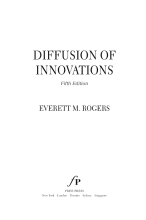Characteristics and Applications of Polymers - Elastomers
5 important questions on Characteristics and Applications of Polymers - Elastomers
What are silicone rubbers?
What are the elongation, useful temperature range, major applications and typical applications of Natural polyisoprene (Natural Rubber NR)?
The useful temperature range is between -60oC an 120oC.
Natural Rubber has excellent physical properties, good resistance to cutting, gouging and abrasion, also resistant to low heat, ozone and oil. Has good electrical properties.
Mostly used in tires, tubes, heels, soles and gaskets
What are the elongation, useful temperature range, major applications and typical applications of Acrylonitile-butadiene copolymer (NBR)?
The useful temperature range is between -50oC and 150oC.
NBR has an excellent resistance to all oils. It has poor low-temperature properties.
It is mostly used in hoses for oil, gasoline and chemicals, seals and O-rings, heels, soles and toys.
- Higher grades + faster learning
- Never study anything twice
- 100% sure, 100% understanding
What are the elongation, useful temperature range, major applications and typical applications of Chloroprene (Neoprene CR)?
The useful temperature range lies between -50oC and 105oC.
CR has excellent ozone, heat and weather resistance, good oil resistance and excellent flame resistance. Not really good in electrical applications.
Mostly used in wire, cable, chemical tank linings, belts, hoses, seals and gaskets.
What are the elongation, useful temperature range, major applications and typical applications of Plysiloxane (VMQ)?
The useful temperature range is between -115oC and 315oC.
VMQ has excellent resistance to both high and low temperatures, low strength and excellent electrical properties.
It is mostly used in high- and low- temperature insulation, seals, diaphragms, tubing for food and medical uses.
The question on the page originate from the summary of the following study material:
- A unique study and practice tool
- Never study anything twice again
- Get the grades you hope for
- 100% sure, 100% understanding
































